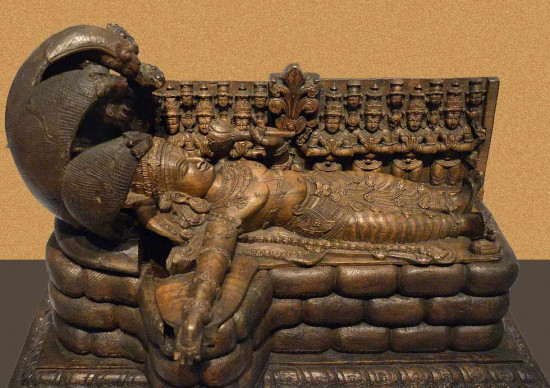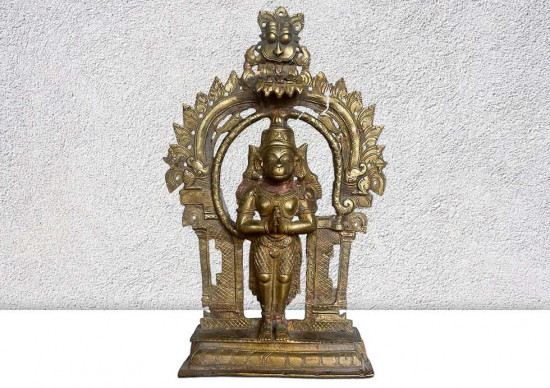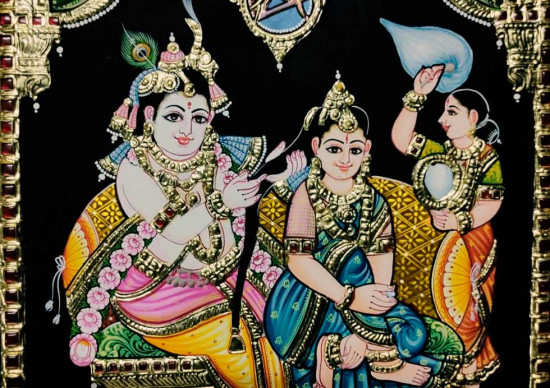
Diwali or Deepavali is the Hindu festival of Lights. This is one of the most celebrated Hindu festivals in India. Diwali is celebrated because Lord Rama returned to Ayodhya after 14 years of exile along with Mata Sita, Lakshman ji and Lord Hanuman on this day. The festival is celebrated with much Splendor and love, involving lighting up homes and streets with countless lamps, fireworks displays, and the worship of various deities.

Why is Diwali Celebrated?
As I said before, Diwali is a Hindu festival celebrated with great enthusiasm across India and other parts of the world. It marks the triumph of good over evil. It commemorates the return of Lord Rama, the seventh avatar of Vishnu, to Ayodhya after a 14-year exile.
Lord Rama is the son of King Dasharatha . King Dasrath had 3 wives, Kaushalya, Kaikeyi and Sumitra. He had 4 sons with his 3 wives, Lord Rama with devi Kaushalya, Bharat with devi Kaikyi, and Lakshamna and Shatrughna with devi Sumitra.
While Lord Rama was the eldest son and rightful heir to the throne of Kosala, a series of unfortunate events created a succession crisis. The cunning Manthara encouraged queen Kaikeyi to banish Rama to the forest for fourteen years and let India crown his son as the new king.
Lord Rama is the son of King Dasharatha . King Dasrath had 3 wives, Kaushalya, Kaikeyi and Sumitra. He had 4 sons with his 3 wives, Lord Rama with devi Kaushalya, Bharat with devi Kaikyi, and Lakshamna and Shatrughna with devi Sumitra.
While Lord Rama was the eldest son and rightful heir to the throne of Kosala, a series of unfortunate events created a succession crisis. The cunning Manthara encouraged queen Kaikeyi to banish Rama to the forest for fourteen years and let India crown his son as the new king.

This demand, driven by a deep-seated desire for her son to rule, caused immense pain and sorrow to Lord Rama, mata Sita, and his younger brother Lakshmana, who accompanied him into exile. The kingdom of Kosala was plunged into turmoil as the people mourned the departure of their beloved prince.
During Lord Rama's fourteen-year exile, he faced numerous challenges and trials. The most significant of these was the abduction of his beloved wife, Sita, by the demon king Ravana. Ravana, the ruler of the demon kingdom of Lanka, had been captivated by Sita's beauty and forcibly taken her to his island kingdom.
To rescue Sita, Lord Rama formed an alliance with Sugriva, the king of the monkey kingdom, andLord Hanuman. With their help, he built a bridge across the ocean to reach Lanka and confront Ravana. A fierce battle ensued between Lord Rama and Ravana, which ultimately resulted in Lord Rama's victory over the demon king.
During Lord Rama's fourteen-year exile, he faced numerous challenges and trials. The most significant of these was the abduction of his beloved wife, Sita, by the demon king Ravana. Ravana, the ruler of the demon kingdom of Lanka, had been captivated by Sita's beauty and forcibly taken her to his island kingdom.
To rescue Sita, Lord Rama formed an alliance with Sugriva, the king of the monkey kingdom, andLord Hanuman. With their help, he built a bridge across the ocean to reach Lanka and confront Ravana. A fierce battle ensued between Lord Rama and Ravana, which ultimately resulted in Lord Rama's victory over the demon king.
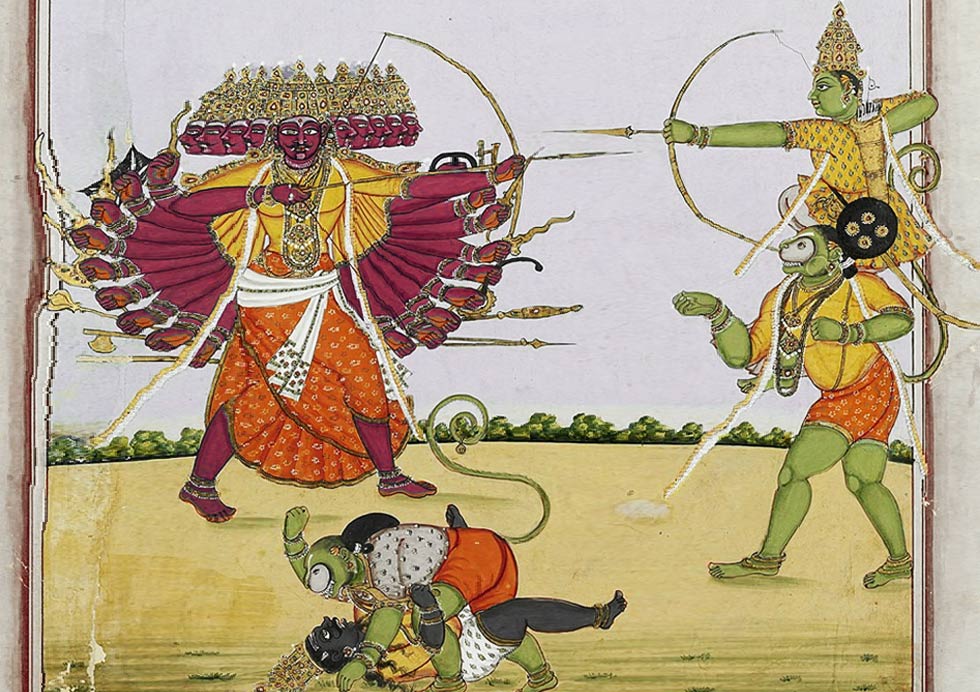
The lighting of lamps during Diwali symbolizes the triumph of light over darkness, knowledge over ignorance, and good over evil. Lord Rama's victory over Ravana represents this triumph, as he overcame the forces of darkness and restored order to the world. As an avatar of Lord Vishnu, the preserver of the universe, Lord Rama's victory also signifies the eternal cycle of creation, preservation, and destruction.
After fourteen long years of exile, Lord Rama finally returned to Ayodhya, the capital of the Kosala Kingdom. He became the king of Kosala kingdom. His return was met with immense joy and relief by the people of Ayodhya, who had missed their beloved prince dearly. The people lit up their homes and streets with countless lamps.
The jubilant celebration that followed marked the end of a tumultuous period for the kingdom, and the beginning of a new era of peace, prosperity, and righteousness under the rule of Lord Rama.
After fourteen long years of exile, Lord Rama finally returned to Ayodhya, the capital of the Kosala Kingdom. He became the king of Kosala kingdom. His return was met with immense joy and relief by the people of Ayodhya, who had missed their beloved prince dearly. The people lit up their homes and streets with countless lamps.
The jubilant celebration that followed marked the end of a tumultuous period for the kingdom, and the beginning of a new era of peace, prosperity, and righteousness under the rule of Lord Rama.

Why Do We Worship Lakshmi and Ganesh on Diwali?
There are many stories related to worship of Goddess Lakshmi and Lord Ganesha on Diwali. One of the primary stories behind Diwali is the return of Lord Rama, along with his wife Sita and brother Lakshman, to Ayodhya after a 14-year exile. It is said that when Lord Rama comes back to Ayodhya Prosperity, wealth, and joy also come back. The people of Ayodhya were so overjoyed that they lit up their homes with lamps to celebrate his homecoming.
While Diwali is primarily associated with Lord Rama, Goddess Lakshmi and Lord Ganesha are also widely worshiped during this time.
It's believed that when Lord Rama returned to Ayodhya, Goddess Lakshmi and Lord Ganesha also arrived. These deities symbolize wealth, prosperity, and success.
While Diwali is primarily associated with Lord Rama, Goddess Lakshmi and Lord Ganesha are also widely worshiped during this time.
It's believed that when Lord Rama returned to Ayodhya, Goddess Lakshmi and Lord Ganesha also arrived. These deities symbolize wealth, prosperity, and success.
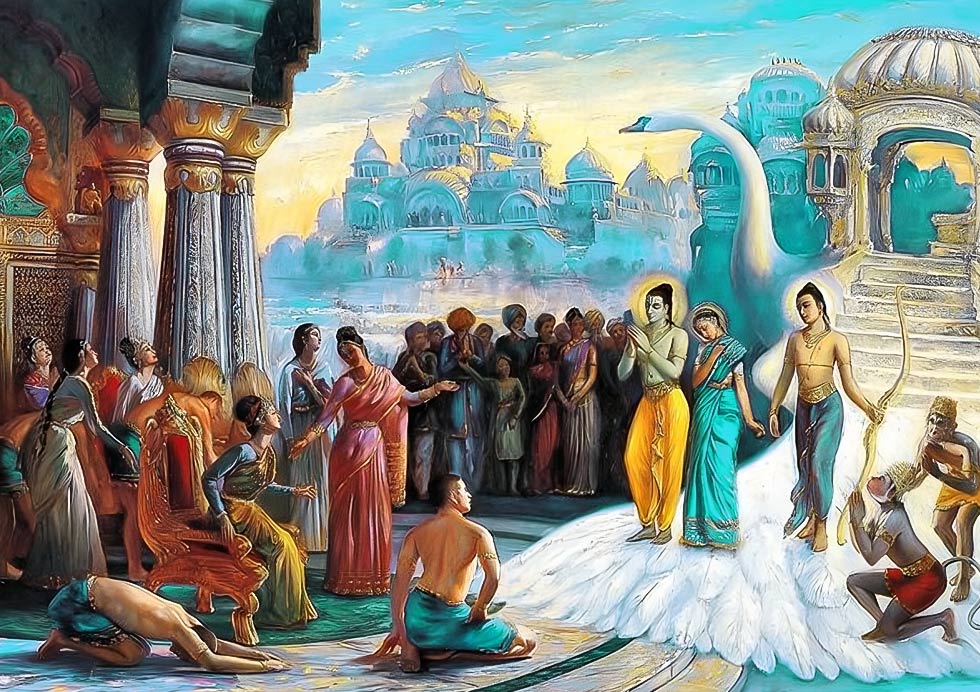
It is believed that worshiping her can bring financial abundance and success. Lord Ganesha is the remover of obstacles and is often invoked before starting new ventures.
The worship of both Lakshmi and Ganesha is seen as a balance between wealth and wisdom. It is believed that possessing wealth without the intelligence to use it wisely is not truly fulfilling. Therefore, worshiping Ganesha ensures that material gains are accompanied by wisdom and judgment.
Another reason for worshiping Goddess Lakshmi and Lord Ganesha together is their close relationship. According to Hindu scriptures, Devi Lakshmi didn't have any children, so she adopted Lord Ganesha from his mother Parvati. She declared that all her wealth and prosperity belonged to Ganesha and that anyone who did not worship both of them would not achieve true prosperity.
Lord Ganesha is often worshiped before other deities or starting any new venture due to a powerful boon he received. It's believed that he has the ability to remove obstacles, ensuring a smooth path for any endeavor. This is why he's often referred to as the remover of obstacles.
Another reason for worshiping Goddess Lakshmi and Lord Ganesha together is their close relationship. According to Hindu scriptures, Devi Lakshmi didn't have any children, so she adopted Lord Ganesha from his mother Parvati. She declared that all her wealth and prosperity belonged to Ganesha and that anyone who did not worship both of them would not achieve true prosperity.
Lord Ganesha is often worshiped before other deities or starting any new venture due to a powerful boon he received. It's believed that he has the ability to remove obstacles, ensuring a smooth path for any endeavor. This is why he's often referred to as the remover of obstacles.
Diwali Lakshmi Puja Vidhi
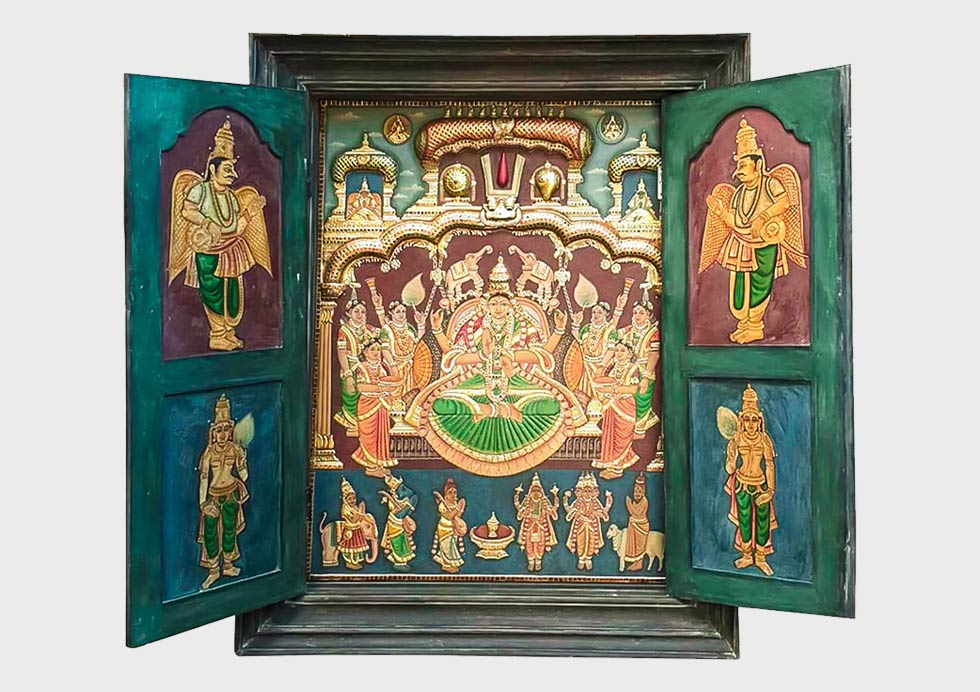
The Diwali Lakshmi Puja Vidhi, or the ritual for worshiping Goddess Lakshmi on Diwali, is detailed in various Hindu scriptures. While there is no single definitive text that outlines the exact procedure, several ancient and modern texts provide guidance on the puja. Some of the key texts that mention Diwali Lakshmi Puja include:
- Vedas: The Vedas, the oldest sacred texts of Hinduism, contain hymns and mantras dedicated to various deities, including Lakshmi. While they don't explicitly mention Diwali as a specific festival, the Vedic hymns can be used during Lakshmi Puja.
- Puranas: The Puranas, a vast collection of mythological and religious texts, often describe the origins of festivals and provide details about rituals. Several Puranas, such as the Devi Purana and the Padma Purana, mention Lakshmi and her worship.
- Grihya Sutras: These texts focus on domestic rituals and household practices. They provide guidelines for performing various pujas, including Lakshmi Puja.
- Modern Puja Manuals: In addition to ancient texts, there are numerous modern manuals and guides available that provide step-by-step instructions for performing Diwali Lakshmi Puja. These manuals often incorporate elements from traditional texts and adapt them to contemporary practices.
It's important to note that the specific details of Diwali Lakshmi Puja can vary depending on regional traditions and personal preferences. However, the core elements of the puja, such as invoking Lakshmi, offering prayers and offerings, and lighting lamps, remain consistent across different sources.
The Vidhi, or procedure, for Lakshmi Puja during Diwali typically involves several important steps. Firstly, devotees clean their homes thoroughly to welcome the Goddess and create a pure and sacred space for the puja. Rangoli, colorful patterns made with rice flour or colored powders, are often drawn at the entrance to invite prosperity and good fortune.
On the evening of Diwali, as the auspicious time approaches, devotees gather for the puja. They begin by lighting a lamp or diya to symbolize the presence of divine energy. This is followed by offering flowers, incense, and sweets to the Goddess Lakshmi while reciting sacred mantras and hymns dedicated to her.
One of the key aspects of Lakshmi Puja at home is the offering of prasad, which typically includes sweets like ladoos, fruits, and other delicacies. This prasad is considered blessed by the Goddess and is later distributed among the family and guests as a symbol of her generosity and abundance.
During the puja, devotees also offer coins, gold, or silver items to signify wealth and prosperity. The act of giving and sharing during Diwali symbolizes the importance of generosity and charity, values that are deeply ingrained in Hindu traditions.
After the puja is complete, devotees seek the blessings of elders and exchange good wishes with friends and family members. The lighting of fireworks and sharing of meals further enhance the festive spirit of Diwali, making it a time of joy, celebration, and spiritual renewal.
By performing Diwali Lakshmi Puja with devotion and sincerity, devotees not only seek material wealth but also aspire for spiritual prosperity and inner peace. This sacred ritual reinforces the belief in the cosmic energies of abundance and reminds us to be grateful for the blessings we receive in our lives. May the divine grace of Goddess Lakshmi bring prosperity, happiness, and fulfillment to all who celebrate Diwali with reverence and faith.
The Vidhi, or procedure, for Lakshmi Puja during Diwali typically involves several important steps. Firstly, devotees clean their homes thoroughly to welcome the Goddess and create a pure and sacred space for the puja. Rangoli, colorful patterns made with rice flour or colored powders, are often drawn at the entrance to invite prosperity and good fortune.
On the evening of Diwali, as the auspicious time approaches, devotees gather for the puja. They begin by lighting a lamp or diya to symbolize the presence of divine energy. This is followed by offering flowers, incense, and sweets to the Goddess Lakshmi while reciting sacred mantras and hymns dedicated to her.
One of the key aspects of Lakshmi Puja at home is the offering of prasad, which typically includes sweets like ladoos, fruits, and other delicacies. This prasad is considered blessed by the Goddess and is later distributed among the family and guests as a symbol of her generosity and abundance.
During the puja, devotees also offer coins, gold, or silver items to signify wealth and prosperity. The act of giving and sharing during Diwali symbolizes the importance of generosity and charity, values that are deeply ingrained in Hindu traditions.
After the puja is complete, devotees seek the blessings of elders and exchange good wishes with friends and family members. The lighting of fireworks and sharing of meals further enhance the festive spirit of Diwali, making it a time of joy, celebration, and spiritual renewal.
By performing Diwali Lakshmi Puja with devotion and sincerity, devotees not only seek material wealth but also aspire for spiritual prosperity and inner peace. This sacred ritual reinforces the belief in the cosmic energies of abundance and reminds us to be grateful for the blessings we receive in our lives. May the divine grace of Goddess Lakshmi bring prosperity, happiness, and fulfillment to all who celebrate Diwali with reverence and faith.

